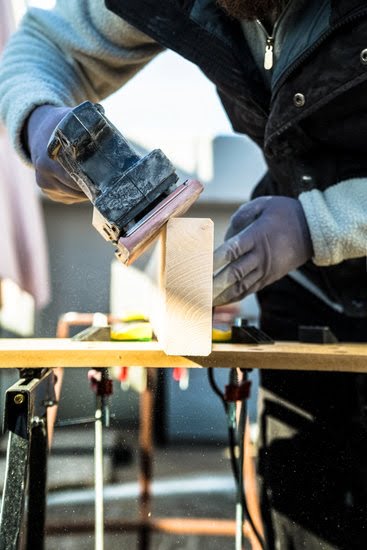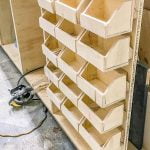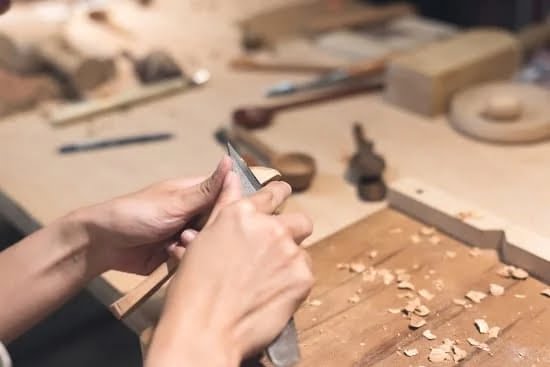Woodwork hand tools are essential for any woodworking project, whether you are a beginner or a seasoned professional. These tools are used to shape, cut, carve, and finish wood, and they come in a wide variety of shapes and sizes to suit different tasks.
In this article, we will explore the world of woodwork hand tools, from their history to the essential tools for beginners, advanced tools for pros, safety tips, maintenance advice, common mistakes to avoid, and innovations and trends shaping the future of these tools.
Woodworking has been around for centuries, and hand tools have played a crucial role in shaping the craft. From simple chisels and hammers to complex and specialized carving tools, woodwork hand tools have evolved over time to meet the changing needs of woodworkers. Whether you are interested in traditional woodworking methods or modern techniques, understanding the history of these tools can provide valuable insight into their importance and use.
For beginners looking to get started with woodworking, having the right set of essential hand tools is key. Learning how to choose the right tools for your projects can make all the difference in achieving success. As you progress in your skills and take on more complex projects, advanced woodwork hand tools can help you achieve greater precision and efficiency. From power saws to router planes, these advanced tools can open up new possibilities for your woodworking endeavors.
History of Woodwork Hand Tools
The history of woodwork hand tools dates back to early civilizations when humans first began shaping and crafting wood for practical and artistic purposes. From the simple axe and chisel to the more complex planes and saws, woodworkers have relied on these tools for centuries to create functional furniture, intricate carvings, and beautiful structures.
Early Developments
In ancient times, woodwork hand tools were typically made from stone, bone, or metal. The earliest tools, such as the adze and the bow drill, were used for carving and drilling holes in wood. As technology advanced, so did the design and function of these tools. Woodworkers in different cultures developed their own unique hand tools, each with specific uses and features.
Industrial Revolution
The Industrial Revolution brought significant advancements in woodworking technology, leading to the mass production of hand tools. The invention of machines like the lathe and bandsaw revolutionized the woodworking industry, allowing for faster and more precise craftsmanship. However, traditional hand tools continued to be essential for woodworking artisans who valued craftsmanship and quality over speed and quantity.
Modern Era
In recent decades, there has been a resurgence of interest in traditional woodworking methods and hand tools. Many artisans and hobbyists have rediscovered the satisfaction of creating handmade items using age-old techniques. This renewed appreciation for craftsmanship has led to a revival of interest in classic woodwork hand tools and a renaissance in traditional woodworking skills. Today, modern manufacturers continue to produce high-quality hand tools that combine timeless design with innovative materials and technologies.
The history of woodwork hand tools is a testament to human ingenuity and creativity. Woodworkers throughout history have relied on these timeless instruments to bring their visions to life through skilled craftsmanship. Whether it’s an ancient chisel or a cutting-edge hand plane, these tools continue to play a vital role in the artistry of woodworking.
Essential Woodwork Hand Tools for Beginners
Woodworking is a popular hobby and skill that requires the use of various hand tools to create beautiful and functional pieces. For beginners, it’s important to start with a few essential woodwork hand tools that will allow you to complete basic projects and develop your skills.
Measuring and Marking Tools
One of the most essential woodwork hand tools for beginners is a tape measure or a combination square, which are crucial for taking accurate measurements and marking cuts. An accurate measurement is key to ensuring all pieces fit together properly.
Cutting Tools
Another essential tool for woodworking beginners is a sharp set of chisels, which are used for shaving small amounts of wood or cleaning out tight corners. A quality handsaw or a backsaw is also important for making precise cuts on smaller pieces of wood.
Fastening Tools
To join pieces of wood together, beginners will need a hammer and a set of screwdrivers or screw gun for driving screws into the wood. Clamps are also essential for holding pieces together while the glue dries.
When starting out with woodworking, it can be tempting to buy every tool available, but it’s best to begin with just the essentials and gradually add more advanced tools as you progress in skill level. By investing in high-quality essential woodwork hand tools from the beginning, beginners can establish good habits and ensure their safety while working on projects.
Advanced Woodwork Hand Tools for Pros
Woodworking is a craft that requires a variety of hand tools to create detailed and intricate designs. While beginners may start with the basic hand tools, seasoned pros often rely on more advanced equipment to achieve professional results. Here are some essential advanced woodwork hand tools for professionals:
- Router: A router is a versatile tool that can be used for shaping edges, creating grooves, and cutting joinery. With the right bits, a router can also be used for decorative work such as carving and inlay.
- Table Saw: A table saw is an essential tool for making straight cuts on larger pieces of wood. It can also be used with jigs and fixtures to create different types of joinery.
- Wood Lathe: For professionals interested in woodturning, a wood lathe is indispensable. It allows craftsmen to create intricate designs such as bowls, spindles, and table legs.
In addition to these tools, advanced woodworkers may also use specialty planes, power sanders, and bandsaws to achieve their desired results. These tools allow for greater precision and efficiency in completing woodworking projects.
Woodworking enthusiasts must always prioritize safety when using these advanced hand tools. Additionally, proper maintenance and care are crucial in ensuring the longevity of these equipment.
With advancements in technology, woodworking hand tools continue to evolve. Innovations such as laser-guided saws and computer numerical control (CNC) machines have provided new opportunities for professionals to expand their capabilities and produce increasingly complex designs. As technology continues to progress, we can expect exciting developments in the world of woodworking hand tools.
Safety Tips for Using Woodwork Hand Tools
Woodwork hand tools are essential for any woodworking project, but they can also pose a safety hazard if not used properly. Whether you are a beginner or a seasoned professional, it’s important to prioritize safety when using these tools. Here are some important safety tips to keep in mind when working with woodwork hand tools.
First and foremost, always wear appropriate safety gear when using woodwork hand tools. This includes safety goggles to protect your eyes from flying debris, ear protection to guard against loud noises, and gloves to prevent cuts and splinters. Additionally, make sure your work area is well-lit and free from clutter to avoid accidents.
When using cutting tools such as chisels, saws, or planes, always maintain proper hand placement and a secure grip on the tool. Keep your fingers away from the cutting edge and use a vice or clamp to secure the workpiece whenever possible. It’s also important to work with sharp tools – dull blades require more force and are more likely to slip and cause injury.
Lastly, be mindful of your surroundings and those around you while using woodwork hand tools. Always communicate with others in the workshop, especially when operating power tools or moving heavy equipment. By following these safety tips, you can reduce the risk of accidents and injuries while working with woodwork hand tools.
| Safety Tip | Description |
|---|---|
| Wear Safety Gear | Always wear goggles, ear protection, and gloves while working with woodwork hand tools. |
| Maintain Proper Hand Placement | Avoid placing your fingers near the cutting edge of the tool and use clamps to secure the workpiece. |
| Stay Mindful of Surroundings | Communicate with others in the workshop and be aware of potential hazards in your work area. |
How to Maintain and Care for Woodwork Hand Tools
Woodwork hand tools are essential for anyone working with wood, whether they are a beginner or a professional. However, to ensure that these tools last for a long time and continue to perform effectively, it is important to properly maintain and care for them.
One of the most important aspects of maintaining woodwork hand tools is keeping them clean. After every use, it is crucial to remove any sawdust, dirt, or other debris from the tools. This not only prevents buildup that can affect their performance but also reduces the risk of rust or corrosion. Additionally, it is important to regularly oil metal parts to prevent them from rusting.
Proper storage is also key in caring for woodwork hand tools. When not in use, they should be stored in a dry place to prevent moisture damage. It is best to hang larger tools such as saws and clamps on a pegboard or store them in a dedicated tool cabinet. Smaller hand tools can be kept in a toolbox or drawer organizer to prevent them from getting lost or damaged.
It is also important to regularly inspect woodwork hand tools for any signs of wear and tear. Handles should be checked for cracks or splinters, blades should be examined for dullness or nicks, and moving parts should be lubricated as needed. By staying proactive about maintenance and repairs, woodwork hand tools will continue to provide reliable performance for years to come.
| Maintenance Tips | Care Tips |
|---|---|
| Regularly clean off sawdust and debris | Store in a dry place |
| Oil metal parts after use | Inspect for wear and tear regularly |
| Properly store in designated spaces | Lubricate moving parts as needed |
Common Mistakes to Avoid When Using Woodwork Hand Tools
Woodworking is a rewarding and creative hobby, but it can also be dangerous if not done properly. When using woodwork hand tools, it is important to be aware of common mistakes that can lead to accidents and injuries. By knowing what to avoid, woodworkers can enjoy their craft safely and effectively.
Here are some common mistakes to avoid when using woodwork hand tools:
- Using dull or damaged tools: Dull cutting edges can result in a lack of control and could cause the tool to slip, leading to potential injury. It is important to regularly sharpen and maintain hand tools to ensure they are in proper working condition.
- Ignoring safety gear: One of the most crucial mistakes woodworkers can make is neglecting to wear the appropriate safety gear. This includes goggles or safety glasses, dust masks, ear protection, and gloves. Protecting yourself from sawdust, sharp objects, and loud noises is essential for preventing accidents.
- Improper tool usage: Using a tool for a task it wasn’t designed for can lead to damage of both the tool and the workpiece, as well as an increased risk of injury. It is important to use each woodwork hand tool for its intended purpose and follow proper techniques when handling them.
By being mindful of these common mistakes when using woodwork hand tools, individuals can minimize risks and create a safer woodworking environment. Additionally, it is crucial for beginners to seek guidance from experienced woodworkers or take woodworking classes to learn best practices for using hand tools effectively.
The Future of Woodwork Hand Tools
In conclusion, woodwork hand tools have a rich history and continue to be essential for both beginners and professionals in woodworking. As technology continues to advance, we can expect to see innovations and trends in the design and functionality of these tools. With an emphasis on safety, maintenance, and avoiding common mistakes, woodworkers can ensure the longevity of their hand tools while creating high-quality craftsmanship.
As we look to the future of woodwork hand tools, it is important for manufacturers to consider the evolving needs of woodworkers. This may include incorporating ergonomic designs to reduce strain and fatigue, as well as integrating new materials that improve durability and performance. Additionally, advancements in technology may lead to the development of smart tools that provide real-time feedback and data analytics for better precision and efficiency.
Innovations in woodworking machinery have also influenced the development of hand tools, such as precision cutting instruments and specialty hand planes. The integration of sustainable materials and environmentally-friendly practices will also likely play a significant role in the future of woodwork hand tools. Overall, as woodworking continues to evolve, so too will the technology, design, and capabilities of hand tools used by artisans around the world.
Frequently Asked Questions
What Is a Woodwork Tool?
A woodwork tool is a device or instrument used for shaping, cutting, carving, or joining wood. These tools can range from simple hand tools to more complex power tools, all designed to work with wood.
What Are Woodworking Hand Tools Used For?
Woodworking hand tools are used for a variety of tasks such as measuring, marking, cutting, smoothing, and assembling wood. They are essential for shaping and crafting wood to create furniture, cabinets, decorative items, and construction projects.
What Are the Basic Tools for Woodworking?
The basic tools for woodworking include measuring and marking tools like tape measures and pencils; cutting tools such as saws, chisels, and planes; shaping tools like rasps and files; fastening tools including hammers and screwdrivers; and finally, finishing tools like sandpaper and brushes. These basic tools are necessary for any woodworking project regardless of its complexity.

Hi everyone! I’m a woodworker and blogger, and this is my woodworking blog. In my blog, I share tips and tricks for woodworkers of all skill levels, as well as project ideas that you can try yourself.





